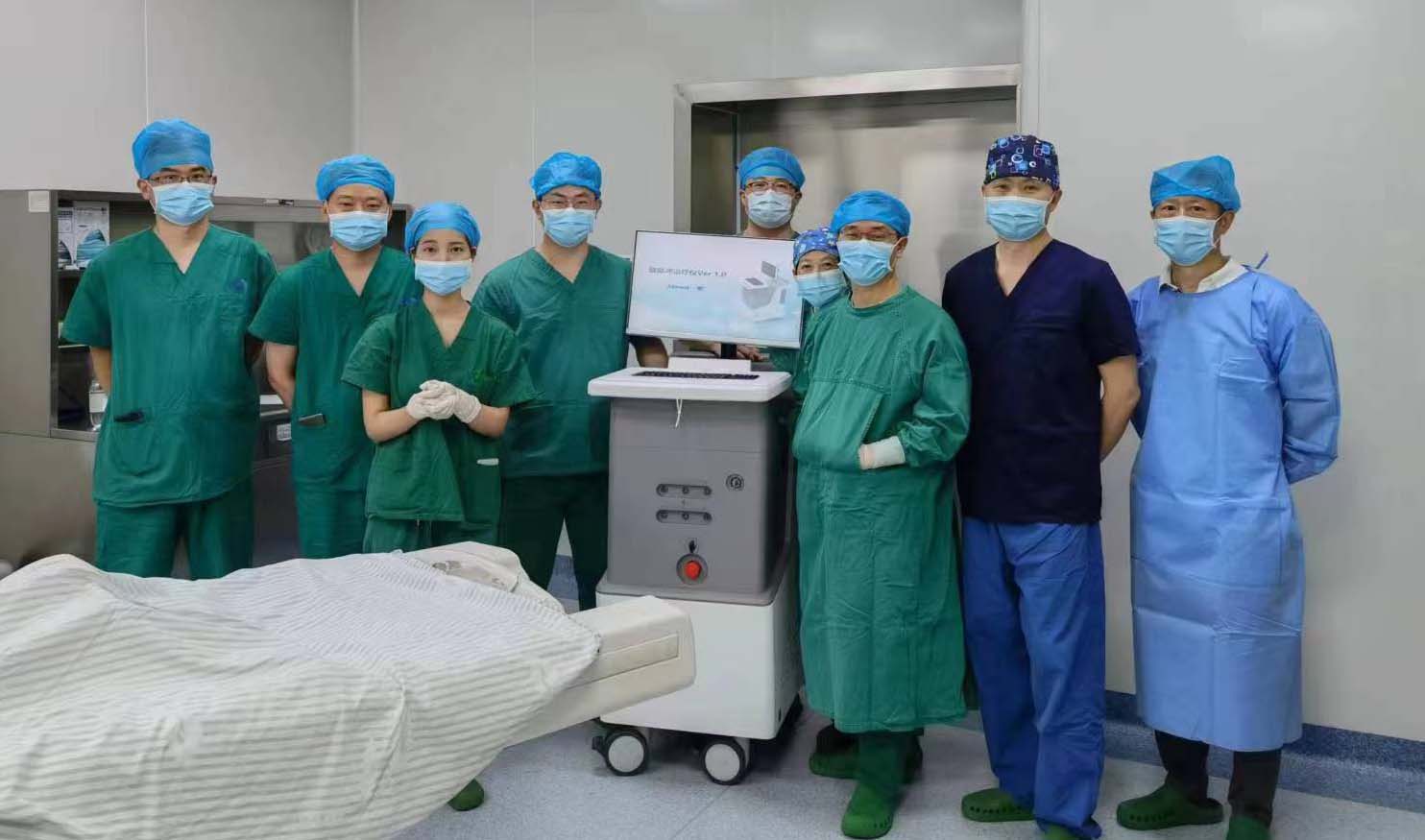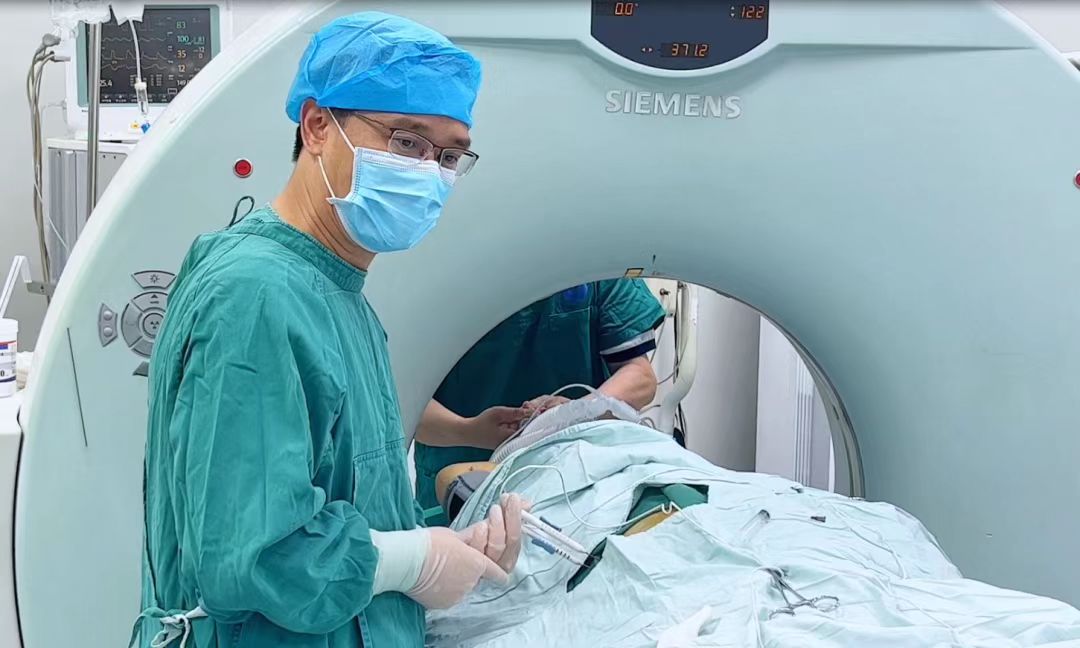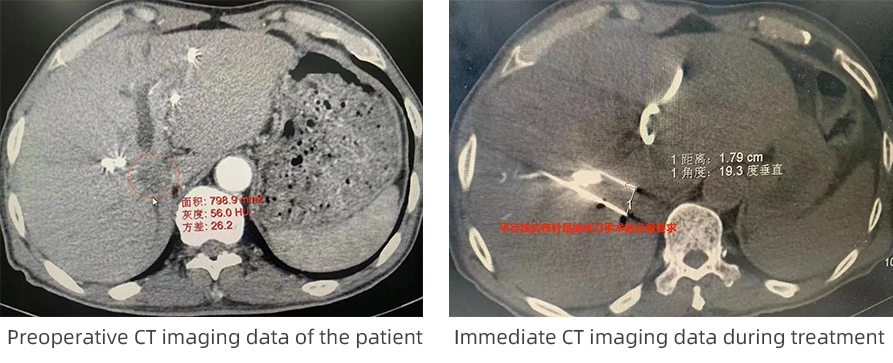

The patient is a 69-year-old male with hilar cholangiocarcinoma and liver metastasis, presenting with jaundice and undergoing biliary drainage. Abdominal enhanced CT scan shows that the tumor is mainly located in the right and common bile ducts, with involvement of the left hepatic duct and dilation of intrahepatic bile ducts accompanied by periductal inflammation, particularly in the right lobe. There are also scattered low-density nodules in the liver, suggesting possible metastasis.

Vice President Li Yongliang of Zigong High-tech Cancer Hospital personally received the patient and led the team to discuss the case multiple times. He also consulted with Professor Liao Zhengyin from the Interventional Center of West China Hospital of Sichuan University. After fully understanding the patient's condition, Professor Liao Zhengyin stated that the patient's condition was severe and the tumor was located in a special area near the hepatic portal vein. The cancer cells had invaded the surrounding tissues, posing great challenges to the surgical approach and the range of resection. The latest Nanoknife ablation therapy can achieve precise and selective ablation, with minimal impact on the blood vessels and bile ducts in the hepatic portal area. By releasing high-pressure pulses, it can cause apoptosis and necrosis of tumor cells. Percutaneous puncture is a minimally invasive method that is also very helpful for postoperative recovery of patients and can be attempted. Therefore, on June 19th, Professor Liao Zhengyin and Vice President Li Yongliang led the team to successfully perform Nanoknife ablation therapy for the patient under CT guidance. The "domestic Nanoknife" used in the surgery is the High Voltage Steep Pulse Minimally Invasive Therapeutic System independently developed and produced by Shanghai Yuanshan Medical Technology Co., Ltd.(Alpmed)

Dr. Liao and Dr. Li used CT guidance to design the needle insertion path, skillfully performed percutaneous puncture, wrapped the lesion with the needle, and conducted ablation. After the second needle adjustment, ablation was performed again. The ablation parameters were as follows: for the first round, the needle tip was exposed 2cm, the distance between the 1st and 2nd needles was 1.7cm, and the voltage was 2700V; for the second round, the needle tip was exposed 2cm, the distance between the 1st and 2nd needles was 1.5cm, and the voltage was 2500V. After checking the ablation effect and obtaining permission from the director, the ablation was completed.

Director Liao Zhengyin stated after the surgery that the Nanoknife ablation therapy went very smoothly. The Nanoknife is particularly suitable for treating tumors in special locations, such as those located in the hepatic hilum where important nerves and blood vessels enter and exit. By using the Nanoknife for treatment, nerves and blood vessels can be preserved, which is an advantage over conventional minimally invasive treatments.
Director Li Yongliang also stated that the biggest highlight of the "Nanoknife" technology is its specificity in treating tumors. The high-voltage pulse current generated by the nanoknife only acts on the tumor cells within the treatment range of the probe, while the arteries, veins, bile ducts, pancreatic ducts, nerves, and other structures within the treatment area are different from the tumor cells and are rich in connective tissue or collagen, which can be completely preserved. It is believed that this treatment method will gradually be recognized in clinical practice and benefit more patients.

|
Liao Zhengyin West China Hospital of Sichuan University Director physician of the tumor center Oncologist I / MD / Postdoctoral Fellowship in Minimally Invasive Interventions Visiting Scholar, Hopkins Hospital and University of Washington Medical Center, USA Director of the Interventional Medicine Committee of Sichuan Medical Association Director, Minimally Invasive Tumor Treatment Committee, Sichuan Anti-Cancer Association Member of Radiation Particle Committee of Chinese Physicians Association Member of the Minimally Invasive Tumor Treatment Committee of the Chinese Anti-Cancer Association Specializes in Specializes in minimally invasive interventional treatment for various types of tumors, with several techniques at the leading level domestically and some at the leading level internationally. These techniques include interventional treatment for malignant tumors such as liver cancer, lung cancer, pancreatic cancer, kidney cancer, breast cancer, thyroid cancer, refractory colorectal cancer, ovarian cancer, bone tumors and bone metastatic tumors, bladder cancer, as well as minimally invasive interventional treatment for vascular tumors and vascular malformations in the trunk and limbs. |

|
Li Yongliang Zigong High-Tech Cancer Hospital Vice President, Deputy Chief Physician Master of Medicine Director of Lung Nodule Diagnosis and Treatment Sub-center of China Lung Cancer Alliance Member of Pulmonary Tumor Special Committee of China Medical Education Association Standing Committee Member of Guangdong Medical Education Association, Special Committee on Transformation of Tumor Diagnosis and Treatment Member of Chemotherapy Committee of Hunan Anti-Cancer Association Member of lung cancer committee of Hunan Anti-Cancer Association Member of Hunan Provincial Precision Therapy Committee Member of Clinical Oncology and MDT Committee of Hunan International Medical Exchange Promotion Association Director of Hunan Health Management Association Tumor Branch Specializes in He specializes in minimally invasive diagnostic and therapeutic techniques such as cryoablation and microwave ablation using argon-helium knives, radioactive particles, and EBUS-TBNA. I also employ systemic treatments such as chemotherapy, immunotherapy, and molecular targeting to enhance comprehensive tumor management and help patients control their condition and improve their outcomes. I have previously served as the Vice Chairman of the Academic Committee and Director of the Medical Department at the Affiliated Cancer Hospital of Fudan University, and have led research projects funded by the Health Commission of Hunan Province, the Beijing Medical Fund, and the Wu Jieping Medical Foundation. |